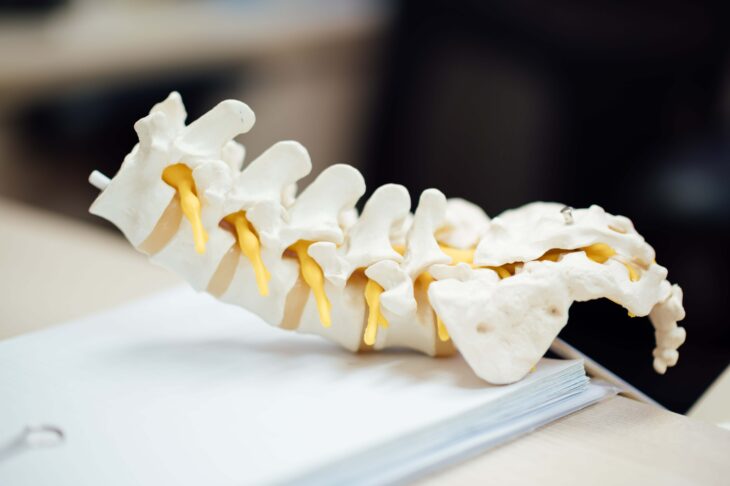
Scoliosis: Symptoms & Treatment Options
Many adults are surprised to discover they have a condition called scoliosis, an abnormal curvature of the spine. Unlike a normal spine that gently curves from back to front in a subtle S shape, spines with scoliosis curve from side to side in a C or S shape. If the curvature of the spine deviates off center by more than 10 degrees, it meets the criteria for scoliosis. The condition cannot be corrected simply by standing up straight to improve your posture.
Most cases of adult onset scoliosis are mild with few symptoms, which explains why many people are surprised to learn they have the condition. Adult onset scoliosis is very different from childhood scoliosis. In the majority of childhood cases, the cause is unknown; while adult onset scoliosis is primarily caused by age-related osteoarthritis, a “wear and tear” condition in which the soft cushioning material (cartilage) between the joints and discs in the spine break down. Over time, this causes the spine to weaken and curve.
Childhood scoliosis, on the other hand, is often discovered through school physicals, while adults typically discover they suffer from scoliosis later in life when they undergo screenings, such as an X-ray, for an unrelated condition. They may also discover the condition when it becomes more severe and causes pain. Scoliosis due to osteoarthritis is most common in adults over age 60 and is often felt as pain in the lower back. It may also be accompanied by a narrowing of the spinal canal (spinal stenosis), which can cause numbness and/or shooting pain radiating down the leg.
Scoliosis can be treated through physical therapy (exercise) or through fusion surgery in more severe cases. The goal of exercise is to strengthen the muscles around the spine to add support. Over-the-counter pain medication and anti-inflammatories may also be used to relieve pain. Doctors do not recommend long-term use of braces in adults because they can weaken core muscles needed to stabilize the spine.
Fusion surgery may be considered after more conservative approaches have failed, especially if the person is in a lot of pain. The goal of surgery is to relieve painful pressure on the nerves, stabilize the spine and improve mobility. Fusion surgery is an in-patient procedure that requires three to five days of hospitalization, although patients are up walking for physical therapy the day after surgery. The length of the surgery varies and can take anywhere from three to eight hours, depending upon its complexity.

Dr. Agarwala performs fusion therapy at OrthoColorado Hospital, Colorado’s only specialty orthopedic hospital designed specifically for the orthopedic patient. He describes the hospital as being like a 5-star hotel for orthopedic patients, offering the same kind of world-class orthopedic care you’d expect to find in New York or Boston.
Fusion surgery involves straightening and stabilizing the spine with titanium rods. Because Dr. Agarwala majored in biomechanical engineering at John Hopkins University as an undergraduate and then went on to complete medical school and a fellowship in orthopedics, he has an in-depth understanding of the nature of the spine related to the various materials used for fusion surgery. He also understands how to leverage specific biomechanical principles to achieve the best surgical outcomes.
Following surgery, patients often report their nerve pain is completely gone and their lower back pain is vastly improved. He informs his patients that they’ll be fully recovered six months after surgery so they can return to the activities they love, such as golf and skiing. It’s important to note the majority of adults with scoliosis will not require surgery. If you suspect Mother Nature has thrown you a curve, chances are you can benefit from a non-surgical treatment plan personalized for your exact condition.